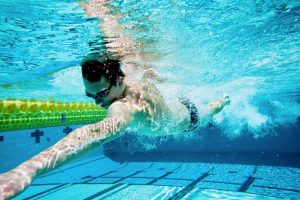Exercising is important to every human being and it should be done on regular basis to help keep you fit and healthy. We recommend at least thirty minutes of exercise per day for five days a week. Keep your body and muscles guessing by changing the exercises (type, duration and intensity) from time to time for better results.
Swimming
Swimming is a great exercise for muscle development and cardiovascular health. Find a swimming coach to help you practice and perfect your swimming skills. There are a number of swim strokes to learn but Butterfly is recommended for the increase of cardiovascular health. The Butterfly consumes a lot of energy compared to other strokes but you can’t go wrong by learning each one and practicing it daily.
Walking & Running
Walking burns less calories compared to other forms of exercising but it’s one exercise that can be done at any time of the day. Make walking fun by going on a walk with your dog in a park. Also, consider skipping the car and take a walk through your town or city. Running is the natural progression to walking and it can be done in the morning hours before you can start your day.
Cycling
Cycling can also improve your cardiovascular fitness. According to research riding a bicycle in speeds of ten miles per hour would burn calories as much as when you would walk 3.5 miles per hour. Riding above ten miles per hour increases the heartbeat and muscles of your body and it demands much more oxygen and energy.
Individual & Team Sports
Finally, consider competitive individual or team sports like hockey, badminton, handball, tennis, basketball, cross-country, skiing, water polo and boxing to help with your cardivascular health. Remember to incorporate continuous movement and engage the upper and lower body. Try not to take many breaks or stand around between sets because the higher the intensity, the greater the workout results.
Climbing
Climbing is a good cardio workout. People can form groups within their communities, schools or clubs. Training partners and personal trainers will help with encouragement & motivation. Climbing also assists in muscle building because it’s a full body workout with even your feet, legs and hands becoming involved.
These types of exercise benefit your muscle development & health of your cardiovascular system. Keep in mind that you should take it slow initially, especially if you haven’t worked out for a while or are in poor physical health. Stay committed and focused and have health goals, too. Do all it takes, it is worth it at the end.


